Please sign in first
Not a member?

- Home
- Online Education Programs
- ISG Journey Thru Gemology
- ISG Credentials
- Legacy Entrance
- Frequently Asked Questions
- Registry of Graduates
- Careers in Gemology
- Important Program Information
- About the ISG
- Why is the ISG Tuition So Low?
- Testimonials of ISG Students and Graduates
- Meet Your Instructor for your ISG education
- ISG Best Online Gemology School
- Graduate Support Programs
- Ishihara Color Vision Test
- Privacy Policy
- Newsletters
- The Story of Ruby
- Turquoise Investigation by the ISG
- The Story of Petrol Quartz
- Top 5 Myths About Jewelry Insurance Appraisals
- The Story of Time
- The Story of Freshwater Pearls
- The Story of Agates and Jaspers
- Susan Bailey v. Frantz Jewelers, et al.
- The Story of Blue Topaz
- The Story of Tibet Andesine
- The Story of Oregon Sunstone
- The Story of Created Moissanite
- Identifying Lab Created Diamonds
- Black Diamond or Created Moissanite?
- Ebay, the GIA, and Section 230
- Lessons From the Angry Janitor
- Exposing the Truth about Lab-Created Diamonds
- AGTA Hobbles Dealers and Buyers
- Appraisers -v- Gem Labs…a Legal Imbalance!
- Understanding the Classification of Diamonds
- Cremation Diamonds: Insuring and Litigating
- Let’s Talk About Gemology Credentials
- Hometown Jewelers and the Force Majeure Clause
- Following the Critical Angle of Diamond Grading
- When Breitling Brought the Airmen Home
- Let’s Open a Refractometer
- Measuring the Energy of Light
- Quick Reference Guide to Sunstone
- ISG Seeing the Invisible Light
- Contact Us
The Story of Agates and Jaspers

ISG The Story of Agates and Jaspers
For many years, the mainstream jewelry industry has considered agates and jaspers the materials of hobbyists, lapidaries, collectors, and old guys with little else to do but go out putzing around in agate-producing fields. Traditional jewelers have given little consideration to these beautiful gem materials. Agates and jaspers have been considered the lost boys of the gemstone industry, leaving vast revenue streams to go unnoticed.
That issue is changing.
Between the world diamond markets committing business suicide and the new generation of “Millenniums” seeking earth-friendly, natural gemstone adornments, the market for agates and jaspers has finally reached a point where demand is high, supplies are high, and prices are low. What more could you ask for a new revenue stream for your store?
Why Agates and Jaspers Attract Attention
 Anyone who has sat out on a summer day and watched the clouds to see what shapes you could find will understand why agates and jaspers are so inviting to customers. Each is different and each presents its unique picture that is interpreted differently to each person viewing. The shapes, forms and pictures found in agates and jaspers invoke special meanings and interpretations to each viewer. Here are two examples below.
Anyone who has sat out on a summer day and watched the clouds to see what shapes you could find will understand why agates and jaspers are so inviting to customers. Each is different and each presents its unique picture that is interpreted differently to each person viewing. The shapes, forms and pictures found in agates and jaspers invoke special meanings and interpretations to each viewer. Here are two examples below.
Examples From Barry and Alan
Over the years of discussing agates with our ISG community, many folks have sent in images of amazing specimens in their collections. Two of these caught my eye as great examples of why agates and jaspers invoke such interest.
Below left is an image of Crowheart Butte in Wyoming (©KACProductions) and below right is a cabochon cut agate from our ISG Global Network member, Barry Bridgestock of Yuma, Arizona. It does not take much imagination to see the connection in these two images.
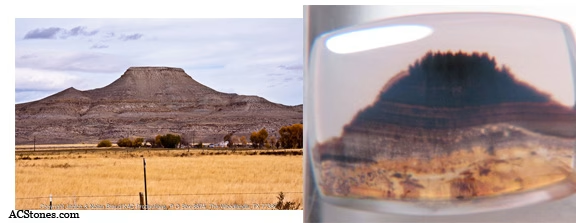
A few years ago, our good friend the late Alan Hodgkinson from Scotland (RIP) sent in two fun images that were the “smile of the day” here in the ISG office. Below left is a famous picture entitled “Scream” by Advard Munch. Below right is a “screaming face” agate from the famous East Coast of Scotland. These beautiful agates even drew the interest of Julius Caesar in ancient Roman times based on their unique beauty. Took me a couple of minutes of standing back from the computer screen to get the full impact, but I do see the “scream” in the agate. In case you have not done so already, be sure and get Alan’s book: Gem Testing Techniques, the most complete and up-to-date book on gem identification in the world.

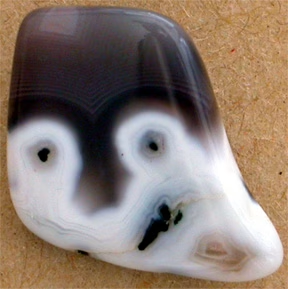
Agates and Jaspers
Before we begin, I have to tell you that the full scientific explanation of the formation of agates and jaspers is well above my pay grade. As a result, I am not going to delve into the science of this as it is a life-time study all its own, based on the people I know who are deeply involved in the agate business. The information I am presenting is based on knowledge sent to me by these folks, which I am passing along with full acknowledgment of the above. Our good friend, Ron Gibbs published a book in 2009 titled: Agates and Jaspers which is, in my opinion, one of the best information resources for agates and jaspers on the market. (The information on his book is at the end of this page.) The nice thing about this book is that it puts some pretty complicated concepts into languages that everyone can understand. Therefore, to describe the difference in “agates” and “jaspers” I will simply refer to the book:
Agates: “Agates are composed of a cryptocrystalline form of silica (it is called chalcedony).” Agates and Jaspers, pp 8.
Jaspers: “The formation of jasper requires a particulate and cement. On the earth’s crust the major process of particulate creation is the sedimentary rock cycles.” Agates and Jaspers, pp 108.
So, agates are formed by the same processes that create cryptocrystalline quartz, and jaspers are formed by the compression of materials in sedimentary rock formations.
That is about as far as I am going to try to take you on the formation of agates and jaspers. Ron’s book is available on Amazon in case anyone would like to learn more. For now, let us look at some really amazing agates and jaspers.
We will start with my favorite: Agate Creek Agates from Australia. The specimen below, along with a large collection of others, was donated to the ISG by ISG Global Network member René Boissevain of Agates Australia.
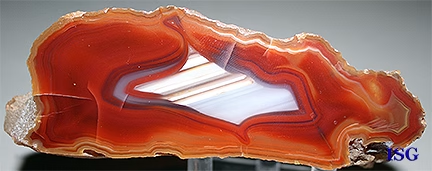
The amazing variations in colors and formations make the Agate Creek Agates the most beautiful in the world…in my humble opinion, of course. Agates are so diverse that opinions and appreciations of agates will vary widely, and no one agate is considered the finest or best based on personal preferences.
Now, let’s look at some images of agates and jaspers. As always, these were photographed wet to bring out their true beauty. If you attend a gem and mineral show looking for agates and jaspers, be sure to see them wet. The final polished gemstone will not need this, but it does allow you to see how the material will be like when polished if you wet the stone. An example is seen below.
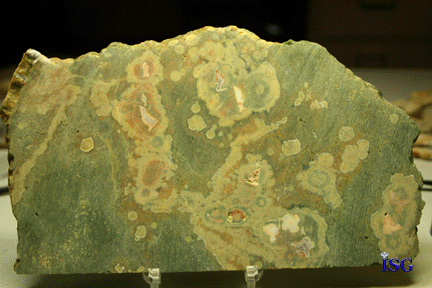
Below are a group of agates and jaspers (and a few related formations) from our collection. Where possible, I have provided the names. Any error in a name is mine as we lost some of the documentation in the car wreck. I do not mind anyone sending in a correction to help us be as accurate as possible. Let’s have some fun…
Cherry Creek Agate

Kabamba Agate
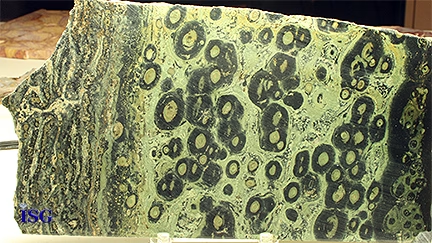
Fire Pit Agate
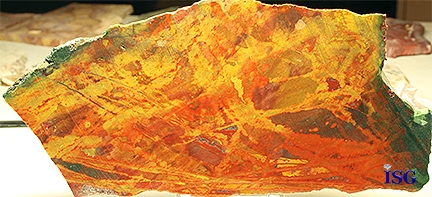
Brecciated Mookaite Jasper
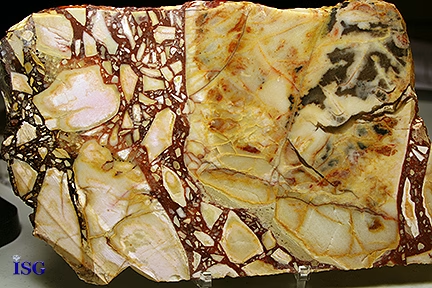
Gecko Jasper
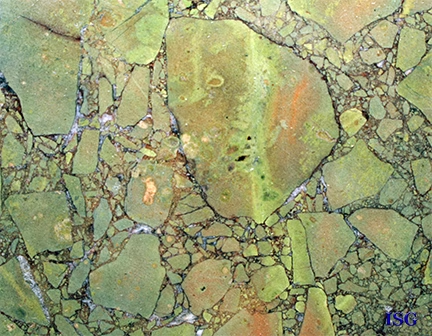
Australian Tiger Iron
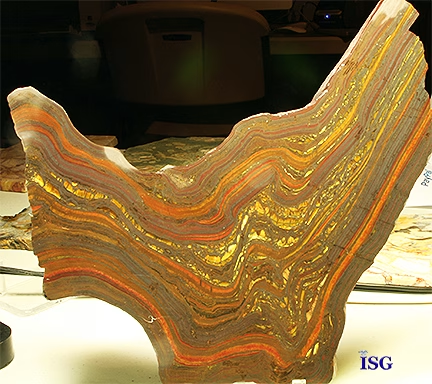
Poppy Jasper
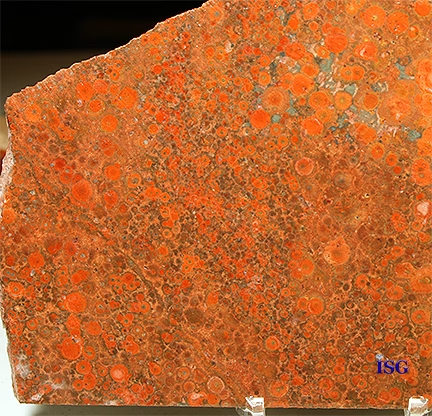
Rain Forest Jasper
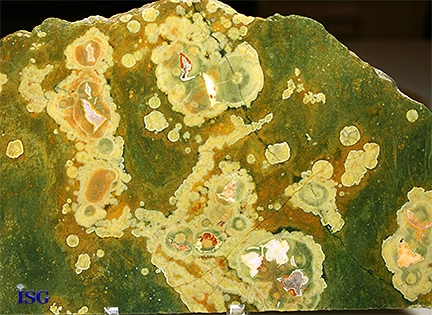
Silver Pocket Agate
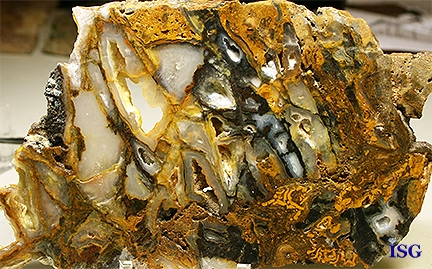
Solar Flare Agate
Silver Lace Agate
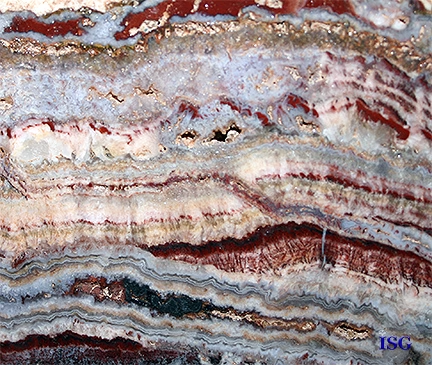
Name Unknown
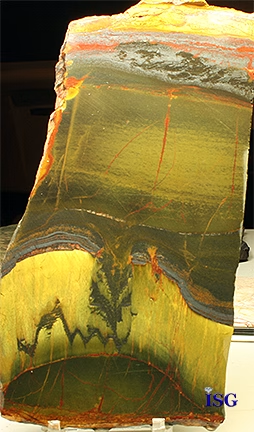 This one is “Name Unknown” due to the loss of the documentation during the crash. The wide golden band toward the bottom has an iridescence that is much like labradorescence. Difficult to photograph but amazing to see in person.
This one is “Name Unknown” due to the loss of the documentation during the crash. The wide golden band toward the bottom has an iridescence that is much like labradorescence. Difficult to photograph but amazing to see in person.
If anyone has information on these, we would appreciate your help.
As you see, agates and jaspers provide a huge array of colors, formations, and patterns. All are unique, all are beautiful, and all can be major revenue streams for the jeweler who can think outside the box and look to modern alternatives to some of the more traditional gemstones that are having major marketing problems.
For those interested in learning more about agates and jaspers, click on the image at left to buy the book from Amazon. The book was published in 2009, and I could not find another source at this time.
In these times, success in the jewelry industry depends on diversification and imagination and being willing to think outside the traditional box of what fine jewelry stores normally sell. Jewelers who have moved to colored gemstones in general, and categories like agates and jaspers are THRIVING. Let me say that again: Jewelers who have moved their inventory into colored gemstones are THRIVING!
Agates and jaspers offer not only unique beauty to the customer but also a huge revenue stream for the hometown, independent retail jeweler.